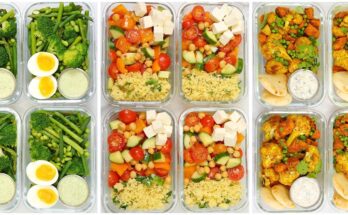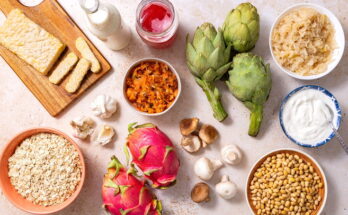Ooni Pizza Dough Recipe: Let’s get one thing straight—using an Ooni pizza oven isn’t like firing up your regular kitchen oven. It’s a beast that hits temperatures up to 950°F (500°C), mimicking a traditional wood-fired pizza oven. That heat can bake a pizza in just 60 to 90 seconds! But with great heat comes great responsibility—especially for your dough. If you use the wrong kind, you’ll either burn the crust before it cooks through or end up with a soggy, lifeless base.
A high-temperature oven like the Ooni demands a dough that can puff up quickly, get that leopard-spotted char, and still have a soft, chewy interior. That means tweaking the hydration, fermentation, and even flour type. So yeah, it’s not just any dough—it’s Ooni-specific dough.
Think of it like using racing tires on a sports car. Regular tires won’t give you the speed or control you need. Same idea here. The Ooni deserves dough that rises fast, cooks evenly, and brings the crunch meets chew factor that we all crave.
What Makes Ooni Dough Unique?
Ooni dough isn’t just another pizza dough—it’s a dough optimized for quick heat exposure. This kind of dough is usually higher in hydration (around 65-70%), which means more water in the mix. Why? Because higher hydration gives you a softer, more open crumb (think airy bubbles), which is perfect for Neapolitan-style pizzas.
You’ll also often see a longer fermentation time—either a slow cold ferment in the fridge or a room temperature rise over 24 hours. This develops that delicious, slightly tangy flavor that takes your homemade pizza from “meh” to “mamma mia!”
Another unique feature? Ooni dough tends to use finely milled 00 flour. This flour creates a super smooth texture and browns beautifully without burning. It’s these small tweaks that help the dough rise quickly and evenly at extreme temperatures.
Ingredients for the Perfect Ooni Pizza Dough
Essential Ingredients You Need
Before diving in, gather your ingredients. Simplicity is key, but quality matters more here than you think. Here’s what you’ll need:
- Flour: 00 flour is the gold standard (Caputo brand is popular), but you can also use bread flour if that’s all you have.
- Water: Lukewarm, ideally filtered.
- Yeast: Active dry or instant yeast both work.
- Salt: Sea salt or kosher salt for better flavor.
- Olive oil (optional): Adds softness and flavor but can be skipped for a traditional Neapolitan dough.
Basic Ooni Pizza Dough Ratio:
- 500g 00 flour
- 325g water (65% hydration)
- 10g salt
- 3g instant yeast
This ratio gives you around 3 medium-sized dough balls (about 260g each), perfect for 10–12 inch pizzas.
Best Flour Type for Ooni Pizza Dough
Flour isn’t just a background player here—it’s the lead actor. For the Ooni, 00 flour is your best bet. Why? Because it’s finely ground and has just the right amount of protein (about 11.5–12.5%). This means it holds together well during stretching but still cooks fast at high heat without turning rubbery.
Some people try using all-purpose flour, and while it can technically work, the results won’t blow your mind. Bread flour is a good backup—it has more protein than all-purpose and can handle a bit more heat, but it won’t give you that melt-in-your-mouth chew you get from 00 flour.
If you’re aiming for that classic Neapolitan pizza feel, stick with 00. Trust me, it’s worth the extra couple of bucks.
Preparing Your Kitchen and Tools
Must-Have Equipment
Before you mix anything, make sure your kitchen is ready. Pizza might be simple in theory, but dough prep needs the right gear. Here’s your Ooni dough toolkit:
- Digital kitchen scale (measure by weight, not volume!)
- Large mixing bowl
- Dough scraper
- Proofing containers or airtight containers
- Kitchen towel or plastic wrap
- Stand mixer (optional but helpful)
- Pizza peel (wooden for prep, metal for launching)
- Infrared thermometer (to check Ooni’s surface temp)
Without the right tools, your dough journey can go sideways fast. Skimping on equipment is like bringing a butter knife to a sword fight.
Preparing a Clean Workspace
Cleanliness isn’t just about being neat—it affects your dough quality. Dust off your countertop, sanitize your hands, and keep your tools dry and floured.
You’ll want a large surface for kneading and shaping. A wooden board is ideal since it doesn’t pull moisture out of the dough like stone or metal surfaces do.
Also, get your containers ready for proofing. Lightly oil them to prevent sticking. Have flour ready for dusting, and if your kitchen is cool, consider a warm spot for the dough to rise. A turned-off oven with the light on is a classic hack.
Step-by-Step Ooni Pizza Dough Recipe
Step 1 – Mixing the Ingredients
Let’s start where all pizza magic begins—the mix. In a large mixing bowl, combine the flour and salt. In a separate cup, dissolve your yeast in lukewarm water and let it sit for 5–10 minutes until it gets foamy (if using active dry yeast).
Now, slowly pour the water-yeast mix into your flour while stirring. Use your hands or a spoon to mix until it forms a shaggy dough. Don’t worry about smoothness yet; that’s what kneading is for.
Once all dry bits are incorporated, let the dough rest for about 20 minutes (this is called autolyse and it helps gluten formation). After that, knead by hand for 8–10 minutes or use a stand mixer with a dough hook for 5–6 minutes on medium speed.
The goal is a smooth, elastic dough that’s tacky but not sticky. When you press it, it should slowly bounce back. That’s your sign you’re ready for the first proof.
Step 2 – Kneading the Dough
Kneading is where your dough transforms from a sticky, chaotic mess into a smooth, stretchy masterpiece. This step is essential because it develops gluten—the protein structure that gives pizza dough its chewiness and elasticity.
If you’re kneading by hand, push the dough away from you with the heel of your hand, fold it back over itself, and repeat. Turn it a quarter turn every now and then to keep things even. It’ll take about 8 to 10 minutes of consistent kneading to reach the right texture. The dough should be smooth, bounce back when poked, and no longer stick heavily to your hands or the surface.
Using a stand mixer? Great. Use the dough hook attachment and mix on medium speed for around 6 minutes. Stop and check the dough halfway through. If it’s wrapping around the hook and pulling away from the bowl, you’re on track.
A good tip: don’t add too much flour while kneading. It might be tempting to sprinkle more if it’s sticky, but that can throw off your hydration and make the dough too dry for high-heat cooking in the Ooni. Use a dough scraper to handle sticky spots instead.
Step 3 – First Proofing
Now that your dough is silky and strong, it’s time to let it rest and rise. This first proof is where fermentation begins. Yeast eats the sugars in the flour and releases gas, creating those glorious air pockets.
Shape your dough into a tight ball by tucking the sides underneath until the top is smooth. Lightly oil a large bowl or container, place the dough inside, and cover with a lid, plastic wrap, or a damp cloth.
Let it proof at room temperature for 1 to 2 hours, depending on how warm your kitchen is. The dough should just about double in size. If your space is cool, put it in a turned-off oven with the light on, or near a warm appliance. You don’t want it too hot, though—yeast is picky and dies off at high temps.
Want next-level flavor? Stick it in the fridge for a 24 to 72-hour cold ferment instead. This slow rise brings out complex, slightly sour notes that mimic those fancy pizzerias.
After the rise, your dough should look puffy, soft, and airy. Press it gently with your finger—if it slowly springs back, it’s ready for the next step.
Step 4 – Dividing and Balling the Dough
This part feels almost ceremonial. You’re taking your dough and turning it into individual pizza balls—each one a future pizza just waiting to happen.
First, lightly flour your work surface. Gently turn out your dough, being careful not to knock out all the air. Use a dough scraper or knife to divide it into equal portions—usually 250g to 270g per ball for a 10-12 inch pizza.
To shape each ball, tuck the edges underneath and twist slightly to create surface tension. The top should be tight and smooth. Think of shaping a balloon—you want tension on the outside to help it hold its form during proofing and stretching.
Place each ball into an oiled container, proofing tray, or even individual bowls. Leave some space between them—they’ll expand. Cover and let them rest for at least 1 hour at room temperature before baking.
If you’re not baking them all right away, you can cold-proof them in the fridge for another 12–24 hours. Just remember to bring them back to room temperature at least 2 hours before baking.
Step 5 – Final Proofing
The final proof is crucial. It’s the difference between a dough that stretches like silk and one that tears like tissue paper.
Let your dough balls rest at room temperature for at least 1 hour before baking. This allows the gluten to relax and makes the dough easier to stretch. If they’ve been refrigerated, give them 2 to 3 hours to fully come to room temp.
During this time, the dough should puff up slightly and feel soft to the touch. Lightly press a finger into the side of a dough ball—it should leave a small dent that springs back slowly.
Keep them covered with plastic wrap or a damp cloth to prevent the surface from drying out, which can make stretching a nightmare.
By the end of the proof, your dough balls should be alive—literally. They should feel airy, soft, and ready to hit that screaming-hot Ooni oven.
Tips for Making the Dough Ooni-Ready
Hydration Levels Explained
Hydration can be a game-changer in how your pizza turns out. In dough-speak, hydration means the ratio of water to flour. A 65% hydration dough means 65g of water per 100g of flour.
For the Ooni, you want a hydration level between 65–70%. Why? Because high hydration doughs develop a lighter, puffier crust that chars beautifully in a high-heat oven.
But be warned: the higher the hydration, the stickier the dough. If you’re just starting out, stick with 65%. Once you’re confident, bump it up to 68–70% for extra airy results.
Keep your hands and surface floured, and use a dough scraper to help manage high-hydration doughs. Trust the process—your crust will thank you.
Cold Fermentation for Flavor
Want to know the secret behind that irresistible, slightly tangy, and deeply flavorful pizza crust you get at artisan pizzerias? It’s cold fermentation. This simple trick involves letting your dough rest in the fridge for an extended period—anywhere from 24 to 72 hours.
Why does this matter? Because the slow fermentation process allows enzymes in the flour to break down starches into simple sugars, which feed the yeast and build complex flavors. Meanwhile, the gluten structure strengthens gradually, giving your dough a better stretch and a crispier bite.
To cold ferment your dough, place your dough balls in an airtight container and refrigerate. If you’re planning to ferment for more than 24 hours, check the dough daily to ensure it’s not over-proofing. It should rise slowly and develop small gas bubbles inside.
Before using the dough, take it out of the fridge and let it sit at room temperature for at least 2 hours. This wakes up the yeast and makes the dough easier to shape. Cold dough is tough to stretch and doesn’t bake evenly in a high-heat oven like the Ooni.
Bottom line? Cold fermentation = next-level pizza. It’s the easiest way to upgrade your homemade pies from average to amazing.
How to Store and Use the Dough
Refrigerating and Freezing Tips
Sometimes you make more dough than you can use—or maybe you’re planning ahead for a pizza party. Either way, storing your dough correctly can save you time and stress.
Refrigeration: After balling the dough, you can refrigerate it for up to 3 days. Place each dough ball in a lightly oiled airtight container. It will continue to ferment slowly, developing more flavor. Remember to bring it to room temp 2–3 hours before baking for best results.
Freezing: To freeze your dough, do it after the first rise and before the final proof. Divide and ball your dough, lightly oil each ball, then wrap them in plastic wrap and place them in a freezer-safe bag or container. They’ll last up to 3 months this way.
To use frozen dough, transfer it to the refrigerator 24 hours before you plan to use it. Let it thaw slowly, then take it out 2–3 hours before baking to allow it to reach room temperature and complete its final proof.
Pro tip: Don’t freeze dough that has already gone through a cold ferment. It can become overly sour or lose its structure.
Bringing Dough Back to Room Temperature
Cold dough is stiff, dense, and nearly impossible to shape properly. Before baking in your Ooni, your dough needs to relax at room temperature.
Once out of the fridge, place your dough balls on a floured tray and cover them with a towel or plastic wrap. Let them rest for at least 2 hours, ideally in a warm area of your kitchen. You’re looking for a slight puffiness and softness when touched—this means the yeast is active again.
Rushing this step can lead to poor oven spring and uneven cooking. The dough needs to be pliable and airy for that perfect puff when it hits the stone in your Ooni.
Use this time to prepare your toppings and heat your Ooni to the right temperature—about 850°F to 950°F (450°C to 500°C). Timing is everything, and when your dough and oven are both ready, magic happens.
Common Mistakes to Avoid
Over-proofing
Over-proofing is one of the easiest mistakes to make—and one of the most frustrating. When your dough proofs for too long, the yeast eats all the available sugars and releases too much gas. The dough becomes overly soft, collapses easily, and loses its ability to rise during baking.
Signs of over-proofing:
- Dough is flat and sticky.
- It smells overly sour.
- It collapses when touched or during baking.
To prevent over-proofing, set timers and use clear containers so you can visually monitor the dough. Stick to the recommended proofing times and temperatures. If in doubt, use the finger-dent test—gently press the dough. If the dent stays and doesn’t spring back, it’s probably over-proofed.
If you catch it early, you can reshape the dough and let it proof again briefly. But if it’s gone too far, the texture and flavor may not recover completely.
Under-kneading
On the flip side, under-kneading your dough is just as damaging. It results in a weak gluten network, meaning your dough won’t hold air well or stretch properly. The crust will be dense, flat, and chewy—in all the wrong ways.
Under-kneaded dough tears easily and feels sticky or overly soft. You won’t get those beautiful air bubbles or the springy texture that makes Ooni pizzas so good.
The fix? Knead until your dough passes the “windowpane test.” Take a small piece and stretch it between your fingers. If it forms a thin, translucent membrane without tearing, it’s ready. If not, knead some more.
Using a stand mixer? Be careful not to over-knead either—about 6 minutes on medium should do the trick. Too much kneading can make the dough tough and dry, especially if hydration levels are low.
FAQs about Ooni Pizza Dough Recipe
Q1: What flour is best for Ooni pizza dough?
Answer: The best flour for Ooni pizza dough is 00 flour, known for its fine texture and high protein content, which helps achieve that soft, chewy Neapolitan-style crust. However, bread flour is a good alternative if 00 flour isn’t available.
Q2: Can I use all-purpose flour for Ooni pizza?
Answer: Yes, you can use all-purpose flour, but the texture may not be as elastic or crispy. It’s suitable for beginners, though it won’t yield the same authentic results as 00 or bread flour.
Q3: How long should I let my pizza dough rise?
Answer: For best results, allow the dough to cold ferment for 24 to 72 hours in the fridge. This slow fermentation enhances the flavor and texture. If you’re short on time, a minimum rise of 4 to 6 hours at room temperature can work.
Q4: How do I prevent my pizza dough from sticking to the peel?
Answer: Dust your pizza peel with semolina flour or cornmeal before placing the dough on it. Also, work quickly to avoid moisture buildup, which causes sticking.
Q5: What hydration level works best for Ooni pizza dough?
Answer: A 65% to 70% hydration level is ideal for Ooni ovens. This means using 65–70 grams of water per 100 grams of flour. It makes the dough soft and pliable, perfect for high-heat cooking.
Q6: Can I freeze Ooni pizza dough?
Answer: Absolutely. After the first rise, portion the dough into balls, coat with olive oil, and freeze in airtight bags. Thaw in the fridge overnight before using.
Q7: How thin should I stretch the dough for Ooni pizza?
Answer: Aim to stretch the dough to about 10 to 12 inches in diameter with a thin center and slightly thicker edges (cornicione). This allows even cooking in the high heat of the Ooni oven.
Conclusion
Mastering Ooni pizza dough isn’t about being a professional pizzaiolo—it’s about understanding the balance between ingredients, time, and technique. With the right flour, a mindful hydration level, proper fermentation, and careful handling, your dough can rival that of top-tier pizza joints. Whether you prefer a same-day bake or a long cold ferment for maximum flavor, the process is surprisingly forgiving once you grasp the fundamentals.
The real beauty of making your own pizza dough for Ooni lies in the transformation. You’re not just throwing flour and water together—you’re building flavor, texture, and that irreplaceable satisfaction of a perfectly blistered, chewy, and crisp pizza crust.
Now go preheat that Ooni, stretch that dough, and enjoy the fruits of your (flour-covered) labor!



